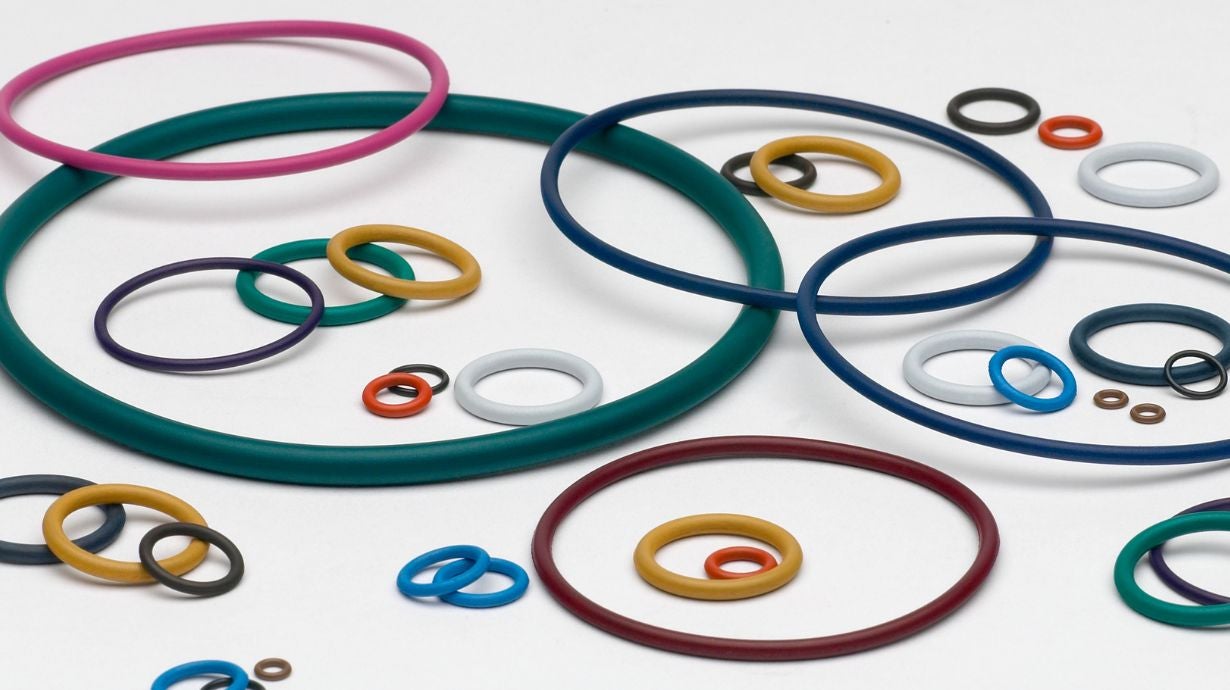A Beginner’s Guide To Hydraulic & Pneumatic Seals

If you regularly work with hydraulic or pneumatic systems, you know how crucial seals can be. But if you’re new to this space, you might be asking: What’s the purpose of seals, and why do they deserve so much attention? Sealing your equipment can sound complicated, but it doesn’t have to be. We’re breaking down the essentials so you can feel confident keeping your equipment running smoothly.
Types of Seals
In simple terms, hydraulic and pneumatic seals are components for machines that rely on pressurized fluid or air to operate. You can find them everywhere, from heavy equipment to sophisticated manufacturing and aerospace systems. Seals work by creating a barrier between moving parts and the fluid or air inside the system. When pressure builds up, the seal flexes just enough to fill any gaps and maintain a tight seal.
Despite their similarities, there are a few key differences:
Hydraulic Seals: Designed for systems that use liquid, typically hydraulic oil. These seals are equipped to handle high pressures and shock loads.
Pneumatic Seals: Used in systems powered by compressed air or gas. They often deal with lower pressure but faster movement, requiring them to be very flexible and resistant to wear.
Seals can be made from a variety of durable materials like rubber, polyurethane, or PTFE. The choice depends entirely on the system's specifications, including the operating temperature, pressure, speed, and the specific type of fluid being used.
No matter the type or material, every seal’s job is three-fold: keep the pressure in for efficient operation, keep contaminants out to protect internal components, and ensure all moving parts can travel smoothly and reliably.
Fluid power systems use a variety of specialized seals, each playing a critical role in preventing leaks and maintaining peak performance. Some of the most common types of seals include:
Rod Seals: Prevent the fluid or air from leaking out around the moving rod (the part that extends and retracts).
Piston Seals: Allow the piston to move effectively inside the cylinder by sealing off different pressure zones. This ensures the system cycles correctly.
Wiper Seals (or Scrapers): These clean off dirt, moisture, and debris from the rod before it retracts back into the cylinder, protecting the sensitive internal components.
O-Rings: Used in both static and dynamic applications to prevent leaks at joints and other connection points.
Wear Rings (or Guide Rings): While not seals themselves, these components are crucial for guiding moving parts (like the piston or rod) and protecting the actual seals from damage.
Why Seals Matter
It’s easy to overlook seals until one fails, but that small component failure can quickly escalate into major operational problems. That is why choosing the right seal and maintaining it properly is essential. A failed seal can lead to:
Costly Leaks and Pressure Loss: Your system loses efficiency, requiring more power and resources to do the same work.
Equipment Damage: Broken or improper seals can allow contaminants, which can score and ruin costly internal components.
Increased Downtime and Maintenance Costs: Replacing a cylinder is far more expensive and time-consuming than maintaining or replacing a seal.
Safety Risks: When it comes to pressurized systems, any component failure can pose serious risks for operators and nearby personnel.
How to Get Seals Right from the Start
If you're managing fluid power systems, keeping a few best practices in mind will save you time, money, and frustration down the road:
Know Your Specs: Before selecting a seal, confirm your system’s exact operating conditions. Maximum pressure, temperature range, rod speed, and fluid type can all affect a seal’s performance.
Ensure Compatibility: Always match the seal material to your operating fluid and conditions. An incompatible material can quickly swell, shrink, or degrade.
Install With Care: Improper installation is the single most common cause of premature seal failure. Use the correct tools and methods to avoid cutting, stretching, or nicking the seal during installation, and ensure a tight seal before operation.
Inspect Regularly: Look for visual signs of trouble like wear, hardening, or leakage and replace seals based on manufactuer instructions.
Hydraulic and pneumatic seals might not be the most glamorous part of your equipment, but they’re absolutely essential. Understanding their function and how to choose and care for them is the key to maintaining a high-performing, leak-free operation.
Need expert advice or help finding the perfect seal for your specific machine? We're here to help. Whether you need standard off-the-shelf solutions or complex custom kits, Triad Technologies has the knowledge and inventory to keep your systems sealed and running strong. Learn more about our Sealing Solutions online, or contact us to get in touch with one of our seal experts today!